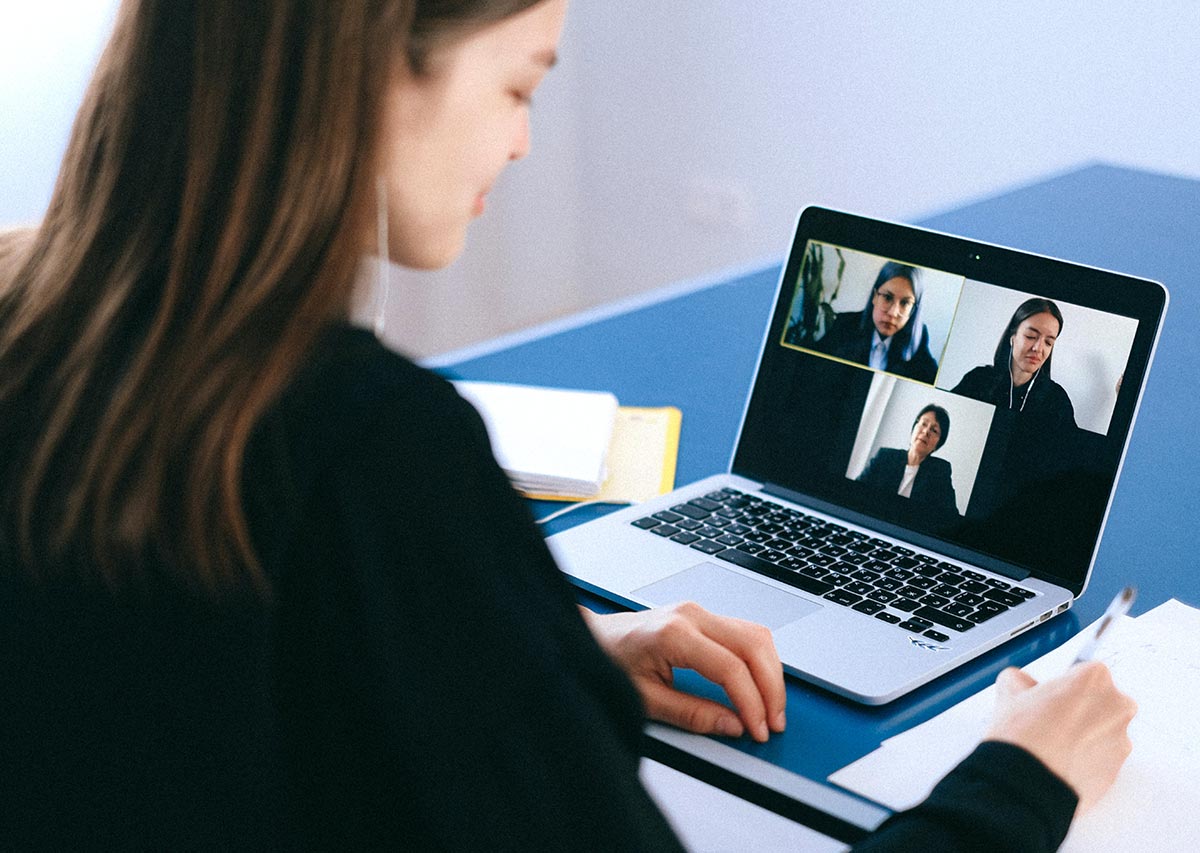With the use of video interviews on the rise, being prepared is the key to video interview success. We have put together a checklist to ensure you are ready for your video interview.
Video Interview Success Tips & Checklist
Have a copy of your résumé printed.
- Refer to it as needed during your interview.
- Read your résumé before the interview. Refreshing your memory on the content of your résumé will help you answer questions during the interview.
Read the job description.
- Look for strengths and weaknesses against the job description and your background.
- Prepare responses for overcoming weaknesses and leveraging strengths.
- Create a list of questions regarding the job duties.
Find a quiet and professional place.
- Don’t use a completely empty room that might echo.
- Use a professional background (desk, blank wall, etc.). Do not place the camera where a bathroom, bed, laundry room, or cluttered surface will be visible.
Test your video and audio in advance.
- The camera should be 1-3 feet away from your face.
- Position yourself so your shoulders and the top of your head are in the video box. There is no need for a full-body or mega-closeup face shot!
- Make sure you have the right amount of light. Keep the light in front of you, not behind you.
- If you are using a cell phone or tablet, put it on a stand or prop it against a stable item. This will reduce movement during the interview which can be very distracting.
Be on time.
- Be prepared early in case the interviewer reaches out, but log in ONLY 2-3 minutes early. Some interviewers use generic login information (which I discourage) and you could log into another meeting or interview if you are too early.
- Don’t be late.
Research the company, interviewers, and role in advance.
- Review the website, social media pages, and recent press releases.
- Check out reviews on the company website, Google, and other resources, such as Glassdoor and Facebook.
Prepare questions.
- Don’t ask questions you could easily answer through basic research. Use your research to create meaningful questions that give you a better idea of the company culture, expectations of the role, and management style.
- Prepare three to five questions. This gives you options if a few of your questions get answered before you ask.
- Be mindful of time – you may not get to all of your questions. If that happens, just save them for the next interview.
Prepare your “professional story.”
- Many interviewers ask situational or behavioral questions, such as “tell me about a time when…” Have your story ready – know what the situation was, what actions you took, and what the outcome was.
- Practice answering questions using the STAR or CAR (Context/Challenge, Action, Result) approach. Aim for responses under 90 seconds – be detailed but concise.
Dress to impress.
- Your attire for a video interview should be the same as it would be for an in-person interview (ok, you can be a little flexible on the shoes).
Be yourself.
- Don’t try to be who you THINK the interviewer wants you to be. Be authentic. The goal of an interview is to assess the fit between a company and a potential employee. To do that effectively, both parties need to be authentic and honest.
Speak clearly.
- Even if you are nervous, try not to talk too fast.
- Avoid using slang and acronyms or jargon specific only to your current/former employer(s).
- Use proper grammar.
Body language matters.
- Sit up straight. This reduces mumbling and helps project interest in the conversation.
- Smile. It is okay to give your cheeks a break, but smile frequently and be mindful of your facial expressions.
- Make eye contact. Look at the interviewer on the screen instead of looking at yourself in the video box. This may be harder than you think, so practice!
No negative talk.
- There is no room for negativity about past employers, former bosses, previous co-workers, your job search, finances, or any other topic during an interview.
- Stay positive!
- Be truthful about weaknesses and answers, but end on a positive note. If you have to discuss a negative experience or weakness, close the response with a lesson learned or confirmation on how you have overcome the weakness or learned from the experience.
Finish strong!
- Express interest in the role before you end the video.
- Send a thank you message after the interview. For tips on writing your message, check out this blog post.
Additional tips:
- Get your jitters out BEFORE your interview. Go to the gym, take a quick walk, meditate, etc.; whatever “your” thing is for stress relief.
- Practice answering common interview questions in advance.
- Do not answer your cell phone – turn it off unless you are using it for the video interview.
- Remind yourself that you are a ROCKSTAR! You are interviewing them as much as they are interviewing you. Know your value and sell yourself.
- Do not lie. Do not “fake it till you make it.” Don’t be afraid to admit if you have no experience with something – be honest and focus on your passion to learn, ability to learn quickly, or interest in learning new things. Look for parallels to experience you do have and tie them together.
Subscribe to our newsletter for the latest trends, tips, market data, and service offerings.


